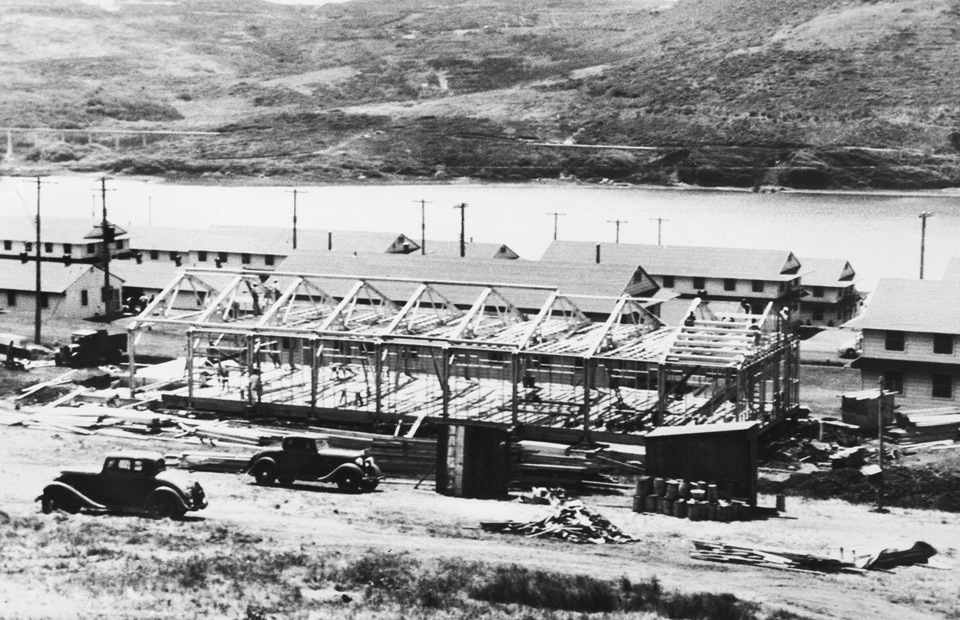
PARC, NPS I can give assurance to the mothers and fathers of America that each and every one of their boys in training will be well housed. - President Franklin Roosevelt, 1940
World War II military posts are where simple wood-frame buildings tell a fascinating story of American ingenuity and the nation’s ability to create and produce quickly, under pressure. In the fall of 1939, two years before our nation officially entered the war, the US Army was comprised of only 200,000 enlisted soldiers and there was little need for new or updated housing. Beginning in 1940, the military started drafting men into the army and navy and military ranks began to swell as hundreds of thousands of draftees –- all of whom had to be housed - entered the service. Within just five years, the army had risen to the challenge and built temporary military housing for all of its soldiers –- a total of approximately 6 million men by 1944! During World War II, providing adequate temporary housing for these new soldiers became a nationwide concern, because temporary barracks for service men were rarely satisfactory. Military field housing during World War I was notoriously bad: soldiers often lived in tents, frequently in harsh environments, without proper heating and sanitary facilities. By the late 1930s, Americans demanded a higher quality of life for their soldiers; as a result, the army was expected to provide better housing for the draftees. The Selective Service Act, passed in September 1940, specifically stipulated that no soldiers would be sworn into service until the government made adequate provisions for their shelter. The military realities of World War II were vastly different than those of the “Great War”. During World War I, American soldiers were transported to France, where they were housed and trained at European posts, close to the battlefields. But by 1940, Germany had occupied most of Europe, leaving England as the only country available to host American troops. Because England only had limited space to house, maintain and train American soldiers, transporting partially-trained American soldiers overseas was no longer an available option. For the first time, the War Department needed to accommodate a substantial standing army that would be stationed in the US indefinitely. And they kept coming -- in response to the growing threat in Europe, 400,000 men had enlisted by November 1940 and by February, 1941, another 700,000 had joined them. The army needed immediate plans for accommodating all these incoming men.
Housing: Quickly & Cheaply The army’s two construction divisions, the Quartermaster General and the Army Corps of Engineers, were immediately given the job of providing housing, quickly and cheaply. They established five principles to guide mobilization construction plans: speed, simplicity, conservation of materials, flexibility and safety. Using these principles, the construction divisions were directed to draw up standard building plans for simple wood-frame structures; the buildings were made with inexpensive and prefabricated materials and could be constructed in assembly-line fashion. The standard plans were bundled into construction packages that could meet the needs of a 125-man company, complete with barracks, mess halls, and recreation buildings and supply buildings. These structures, which now included central heating, interior showers and latrines, and other modern conveniences, were recognized as being far superior to the World War I tents. Construction took place at break-neck speed, as a result of readily available labor resources and ingenuity with building materials. Construction crews at Fort Ord in Monterey, California boasted that they could finish a building every 54 minutes. By June 1941, the army had built housing for 1.2 million men. By June 1942, they were able to accommodate 2.4 million men and by January 1943, 4.6 million men were housed within these wood-frame buildings. |
Last updated: August 2, 2016
